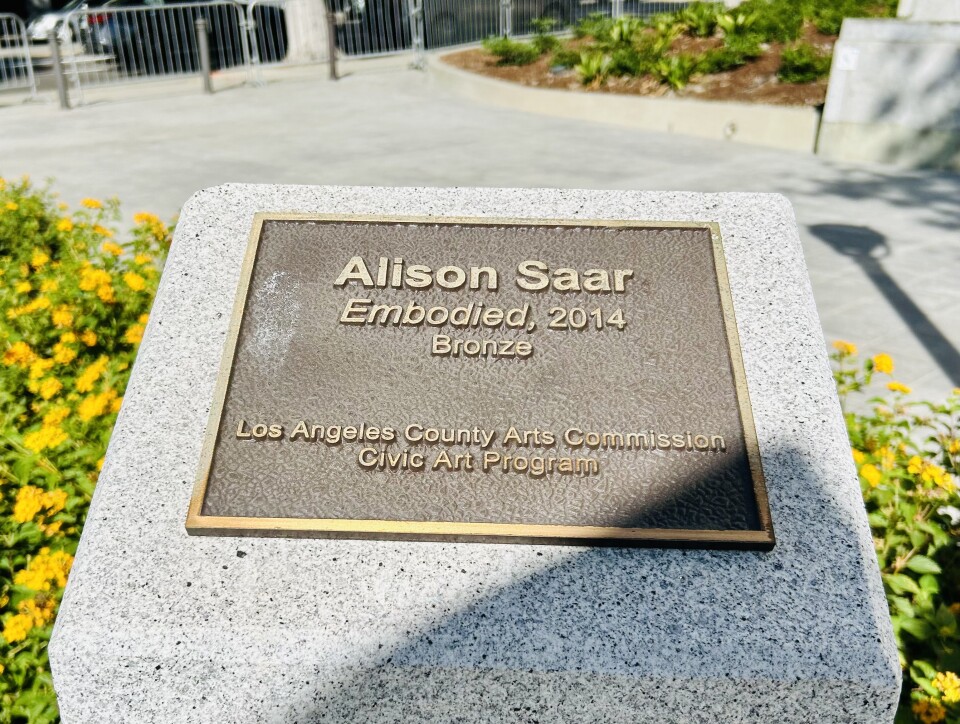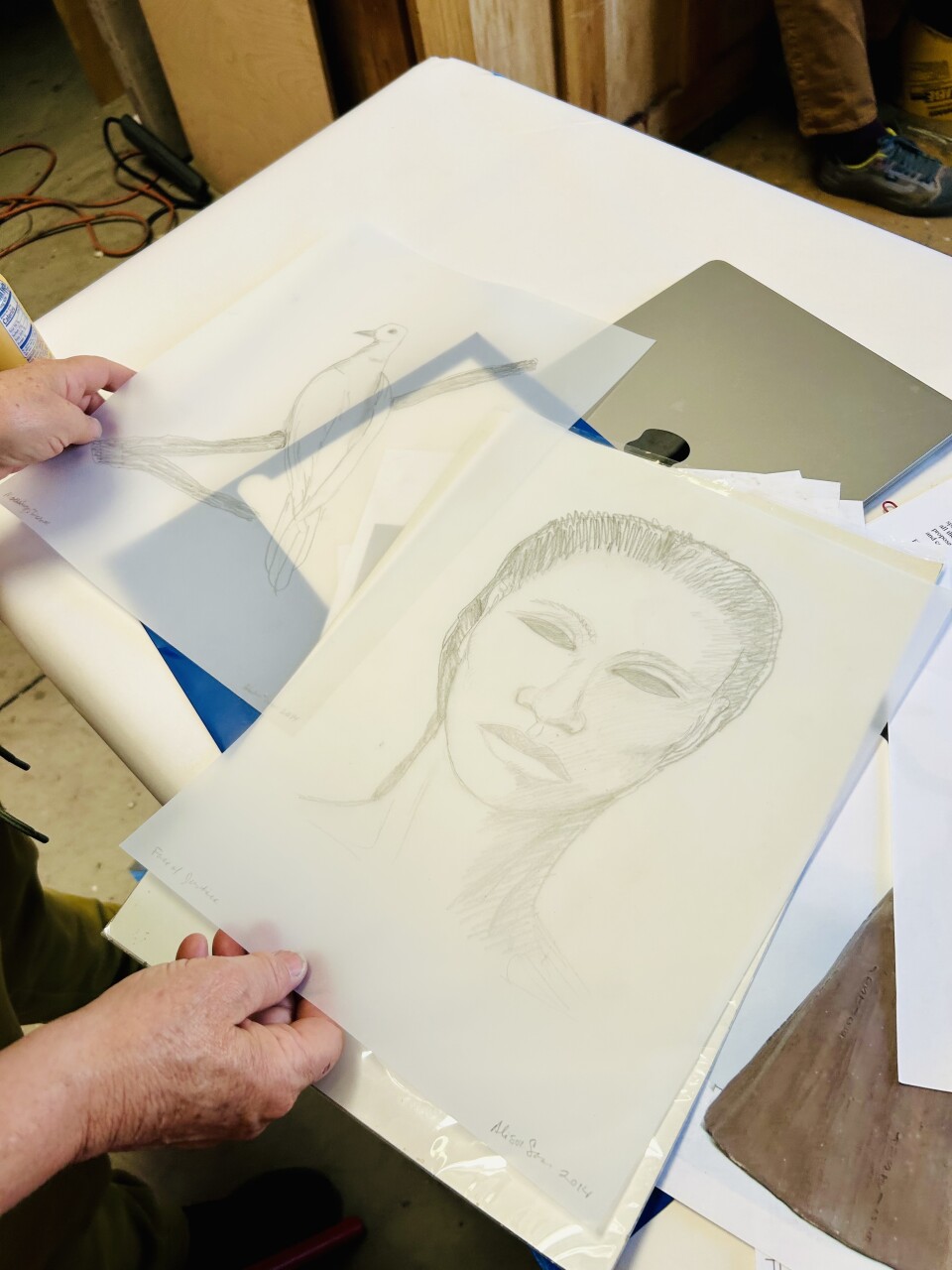Truth matters. Community matters. Your support makes both possible. LAist is one of the few places where news remains independent and free from political and corporate influence. Stand up for truth and for LAist. Make your year-end tax-deductible gift now.
The story behind the Lady Justice sculpture in downtown LA

Artist Alison Saar remembers being in a meeting before she was awarded the commission to create a sculpture of Lady Justice in front of the renovated L.A. County Hall of Justice. Lee Baca was still the L.A. County sheriff.
“He came into the office," Saar said, "and plopped down a traditional Lady Justice and he says, ‘This is what I want.'"
Baca’s statuette wielded a sword, held scales and her eyes were covered with a blindfold. That traditional depiction is thousands of years old.
To Saar, the image was jarring, given her life experiences and world views.
“The sword… which to me just talked about the violence in the judiciary system… and the scales… they're monetary scales. It felt to me like if you’ve got money, you've got one kind of justice,” she said.
And the blindfold? To Saar, it makes Lady Justice blind to compassion.

Saar’s 12-foot-tall bronze sculpture was unveiled in 2014, when the L.A. County Hall of Justice was re-opened after extensive renovations.
The piece is called "Embodied" and it is one of many pieces of public art in Southern California that have rich back stories which reveal important aspects of the region’s history and changing demographics.
This corner has seen a lot of injustice
Stand in front of the statue facing east, toward the L.A. River, and despite the many buildings that block much of the view you can sense the natural slope of the land.
From the 1850s to the 1870s, when most of the buildings were one story, you may have seen mobs congregate here, some in broad daylight, carrying out dozens of lynchings. Vague accusations were made against the victim before they were violently killed.
Saar was thinking of that history as she made the sculpture.
“I think the last documented lynching took place up on that hill; a lot of bad stuff happened on that hill,” Saar said.
The nearly 90-year-old U.S. Court House, across the street from the statue, sits on property that was a slave market in the mid-1800s. During that time a California state law was used to sell incarcerated Indigenous people into bondage.

Add to that the false charges in the 1940s Sleepy Lagoon case, the infamous people jailed at the Hall of Justice, and autopsies of famous Angelenos in the building’s morgue, and you get a sense of how much has happened on that site.
“It's a powerful, kind of intense space,” Saar said.
She chose to depict Lady Justice with elements that reflect people rather than the institutions represented by the building.

L.A. is in the statue
Walk up to the bronze statue and you’ll see words in English, Spanish, Chinese and other languages. They include “advocate,” “punishment,” “virtud,” and “kousei.”

Saar gathered the words from students at the nearby Cortines high school for visual and performing arts, Valley College, from L.A. County Art Department staff, as well as people she encountered outside courthouses. The prompt? What words come to mind when you hear the word “justice.”
“Peace we have, I think, in every language,” Saar said. “The idea that people could come and see this piece and find the word that they submitted, or find words that really were in their language, was really important to me."

Saar wants people to use their eyes and their hands when they’re up close to the sculpture. She wants "Embodied" to appeal to the intellect and to the touch.
The figure’s face is a composite of different races and ethnicities of people in the L.A. area. From the back of her head, a long braid falls down her back and loops up and over the figure’s right arm. Saar says the braid’s three strands symbolize law enforcement, the courts, and the people. The interconnection of these three is needed for justice to work.

“We see that these things are more crucial than ever,” she said.
Visit Lady Justice
Public art is an important part of Saar’s practice. She created an outdoor memorial to Harriet Tubman in Harlem, New York, and the International Olympic Committee chose her to create a sculpture for the 2024 Paris games. Closer to home, a public art piece at the Artesia Transit Center highlights a nearby willow marsh, one of the last of its kind in L.A. County.

“[Public art] is a really important component of what Los Angeles is,” she said.
That's because it’s free and when it’s located where people congregate and meander, it gives them the opportunity to stop and look at the art and meditate on what they see and the art’s ideas, she added.
“I think it's just really important to have art that's available to everybody,” Saar said.










